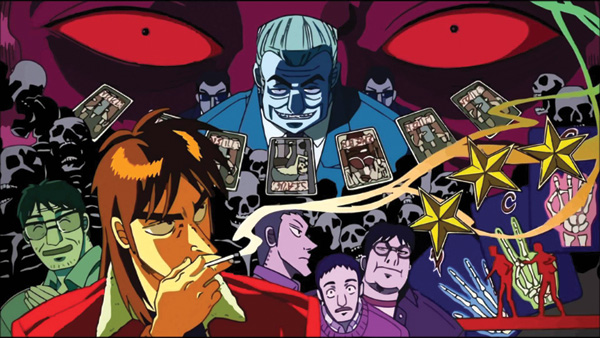
The future is in our hands! After years of being suffering pariahs in a bleak anime world devoid of the light that only a gambling apocalypse can bring, we can finally legally watch the two seasons made to date of the most beautiful ugly puppy of all: 2007’s immensely compelling yet endearingly ugly Kaiji: Ultimate Survivor. It practically defined a genre of pop culture entertainment rarely seen in the catalogue of US anime/manga releases to a generation: high-stakes gambling!
Why’d it take so long for the anime to be made, and even longer to get both seasons here legitimately? Perhaps the manga was ahead of its time in 1996, such that it took this long for the world to catch up.
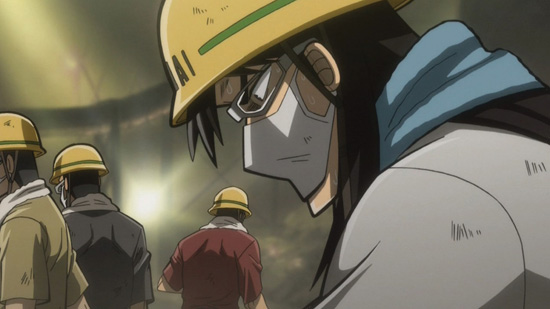
Young Kaiji Ito, having recently graduated, finds himself a victim of the economic recession. Through no fault of his own, he is working dead-end jobs just to try to stay above water since there just aren’t any viable career-making positions. This takes a toll on the psyche, and eventually one stops giving consideration to their appearance and the notion that there’s a future. I mean, just look at that hair!
Next thing you know, Kaiji’s inadvertently saddled with massive debt due to a loan whose terms and conditions were misrepresented to him, and all of this sounds very much like a 1990s prediction of the lives of many of us in America (possibly yourself or someone you know), thanks to the dot-com crash of the early 2000s combined with the 2008 collapse of the housing market. The only difference is that instead of calling people like Kaiji “NEETs” (“Not in Education, Employment, or Training”) our US media writes stories critical of “lazy entitled millennials.”

But … what if there was a way to clear away that lifetime of crushing debt in just a few hours? What if you were given a REAL opportunity to get out of that rut you were in and be forgiven of all those debts, as long as you just sign on the dotted line right here? All you have to do is step aboard a cruise ship, sail out to where the law has no jurisdiction, and play … THE GAME. Success means you might be a millionaire! Failure means you get sent to … THE OTHER ROOM. What happens there and after that? Hey, don’t worry about such things! Your life’s already in tatters as it is, right? What more have you got to lose?
Although it’s revealed in the first episode, I prefer to not disclose what THE GAME entails (no dated Internet memes, please), but such a tempting offer is how Kaiji finds himself in the economic clutches of a shady predatory financial group where he and those similarly downtrodden are put into scenarios in which they must make the wagers of their lives on things that at first seem trivial but quickly escalate in potential severity.

Kaiji is like if the D’arby episodes of JoJo’s Bizarre Adventure, with all their diabolical scheming and overwrought mind-games paired with immense mental pressure, were an entire series. Also, much like JoJo’s, the reason the series has gone on for decades is because it’s broken up into separate series that are each more or less their own complete storyline. Each of the two existing seasons of Kaiji adapt one major arc of the original manga, where thus far four arcs have been completed and the fifth is ongoing.
The gambling scenarios in Kaiji seem to mimic a society where the super-rich few are utterly without compassion, placing no value on the lives of regular people outside of being easily replaceable sources of slave labor whose suffering brings them amusement. Victory in THE GAME (okay, so it’s not just one game) generally requires the contestants to abandon their scruples and cause further harm upon their fellows, all while those in power remain unchallenged and unharmed. In other words, this world is only a few shades removed from our reality!
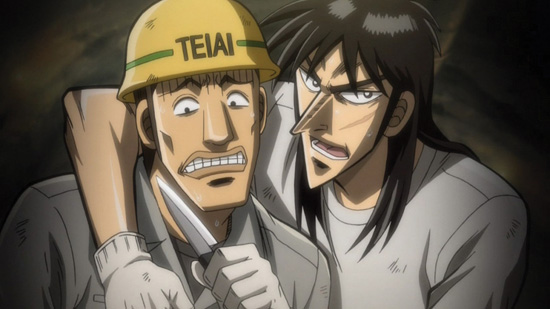
But Kaiji Ito, gullible whimpering crybaby though he may be, is simply too morally upright to abandon his humanity like the rest of the pack. No matter how bad things get, no matter how pathetic a moéblob “trash husbando” he may be, when the chips are down Kaiji can rally his wits to pull off seemingly miraculous turnabouts, snatching victory from the jaws of certain defeat. Or at least, snatching “not defeat” from the jaws of certain defeat; with high-stakes gambling, the only way to get out from these deep holes you’ve dug yourself into is to dig your way out! But hey, he is the Ultimate Survivor, per the title! What could POSSIBLY go wrong? Well, when you’re a character in a story by Nobuyuki Fukumoto, the answer is “probably everything.”
The highly prolific Fukumoto has been creating seinen (“men’s”) manga for decades, juggling several titles at once, most of which tend to be about some combination of gambling geniuses, organized crime, and down-on-their-luck, highly imperfect heroes being put through the wringer and refusing to just stay down. Kaiji remains one of his most successful series because it combines all of the above with Fukumoto’s unmistakable stylistic tics.
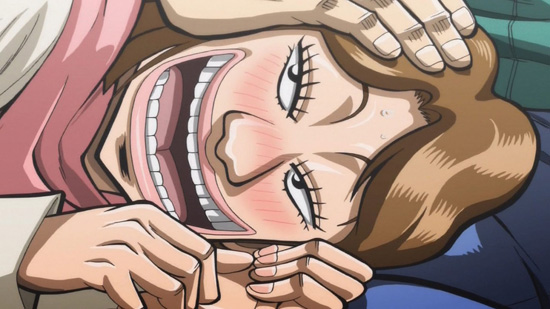
Those gigantic, angular noses and unflattering faces that result in everyone being ugly—even the ladies on the rare occasions that one actually appears—aren’t because “he can’t draw.” Rather, that’s the result of years of refinement! The designs allow for exaggerated facial expressions and contortions, a vital component in selling the peaks and valleys of emotion that go with gambling matters of life, death, and big money.
Such is one of Fukumoto’s calling cards, along with the sound effect “ZAWA ZAWA” to denote minds ill at ease. Watching Kaiji in anime form means you’ll often hear this sound effect whispered by a chorus… when you’re not exposed to his other trademark, the highly talkative and hard-selling narrator explaining just how big a deal everything is with a suitable mix of gravitas, bombast, and wild metaphor that is invariably realized through an outlandish fantasy visual.
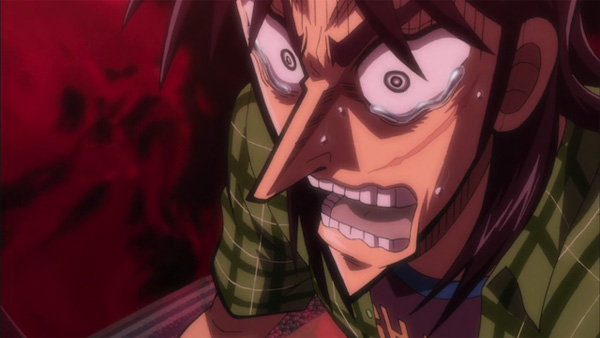
Viewing Kaiji week to week when it originally aired was downright torturous, and for a short period the first season was streaming on a now-defunct site called Joost. Now, thanks to Crunchyroll, both seasons are available for your binge-viewing pleasure. Why, you can even watch the two Japanese live-action film adaptations if you dare, starring much of the same cast as the live-action Death Note movies.
Personally, those people are entirely too good-looking to be playing characters from Kaiji, and they even opted to make some of the characters ladies just so there’d actually be some in the story. Don’t they realize that a series with this kind of artwork still managed to develop such a large fujoshi following BECAUSE there aren’t any women around?! The events of the films do play out a bit differently than what happens in the original source material so you may want to check them out for that. Then, if you’re still craving for more FKMT action (“FKMT” is a way fans often write “Fukumoto” due to how the letters are spoken by the Japanese), you can watch Akagi, which is also streaming on Crunchyroll!

